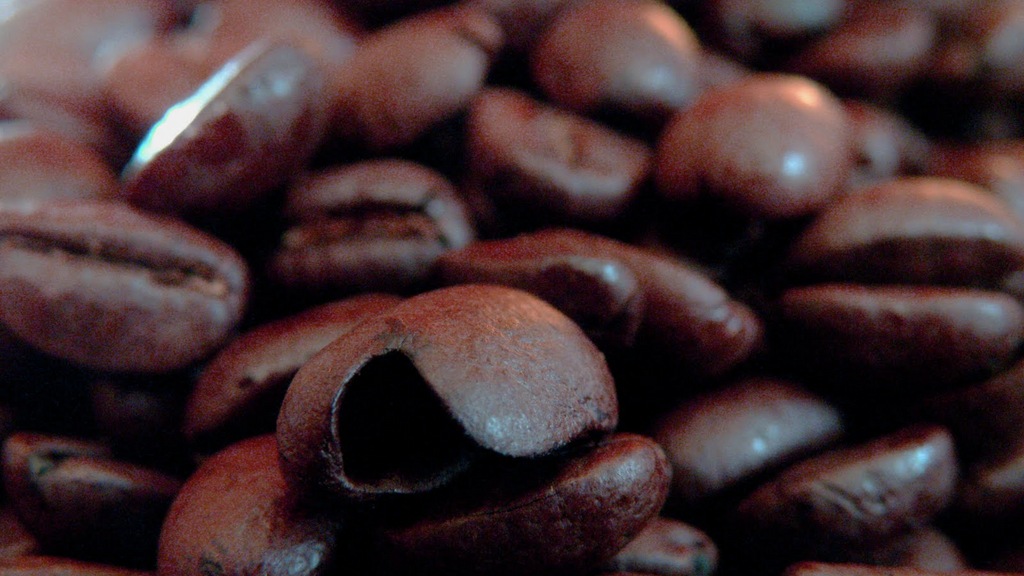Learn About Coffee: What Are Blends?

In our last installment of “Learn About Coffee” we explained a little bit about what single origin coffees are. It only follows that the next question to answer would be “What are blends?”
If you understand single origin, it follows that a coffee blend is a mix of several different single origin coffees. And you would be about 95% right. There’s a little bit more that goes into it.
In addition to mixing several different single origin coffees together, sometimes roasters will blend together the same single origin coffee roasted to different roast profiles. That’s a not-often-used method of blending that can have some interesting results.
'Blend' vs. 'Melange' - Let's Split Some Hairs
OK – if you want to be super, crazy technical, there is a small difference between what’s called a “blend” and, in the roasting world, a “melange”.
When we roast coffees and mix them together, we can do that post-roast or pre-roast.
If it’s post-roast (which is 95% of what we do), we roast each coffee to it’s particular flavor profile and, after it’s roasted, combine them together. Technically, some people call this a “melange”. Don’t ask me why.
If you blend the coffees while they’re still green and roast them all together in the same batch, then it’s a blend.
Technically.
For those who care.
You’ve Heard of These Coffee Blends
Some blends are really popular and almost every roaster has one. “Breakfast Blends” tend to be brighter and fruitier. Espresso blends (not espresso roasts) work really well when brewed in an espresso machine and used to make lattes or cappuccinos. We’ve already talked about our 321 Blend which is a mocha java blend and there’s an interesting story behind that you should read. (hint: mocha java has nothing to do with chocolate.
Coffee Blends – Good or Bad?
The current trend in coffee is, without a doubt, all about single origin coffee. Personally, I find this unfortunate. However, the reason for this trend is probably the fault of us roasters.
Initially, blends were the only thing you could ever get. Every roaster blended coffee together for their particular flavor profile. However, sometimes coffee prices would fluctuate and, in order to maintain their profit margins, roasters would start to mix cheaper, less flavorful beans in their blends. They saved money, but after doing this for a long enough time, the quality in the cup started to suffer. In reaction to that, single origin coffees became more popular because the quality was higher.
For most specialty coffee roasters today, blending has a lot to do with bringing their own unique flavor profile to the market. It also has to do with maintaining consistency across harvests and dealing with the availability of different coffees at different times of the year. Many specialty coffee roasters today try to use only the freshest “current crop” of coffee available. Once you get to the end of the crop year, it can become difficult to maintain the quality you had in your blend at the beginning of the crop year. Often times, roasters will substitute a fresher, higher quality coffee in their coffee to help maintain the quality of the blend.
Blending also allows a roaster to deal with problems that may happen at origin. We've talked a lot about some of the challenges that can come up at origin. Weather changes, pests, fungus can all affect the flavor of the coffee from season to season. This is one of the big challenges behind sourcing coffee - continually sourcing quality coffees to match a particular flavor profile year after year.
Sometimes You Need to be Careful with Coffee Blends
Some less caring roasters like to hide the world “blend” on their packaging in order to market a more expensive coffee. Hawaiian Kona coffee is one example. If you’re buying a “Kona Blend” coffee and paying less than $40 a pound, you’re probably getting a “Kona Blend” that might only have 5 or 10% Kona coffee in it! Or even no Kona coffee at all! Kona runs about $20 a pound for the green coffee to a roaster. So if they’re charging less than that, they’re losing money and no one is in this to loose money.
Another example is Kopi Luak coffee (not that you’d ever consider purchasing this coffee…..EVER. It’s all bad. We’ll get to that in a future post.) This is the “crap coffee” that the Indonesian civet cat digests and poops out the coffee beans. I’ve seen it on shelves for as low as $30 for a 12 oz bag. When I looked at the ingredients, it was only 2% Kopi Luak coffee!
If you’re looking at a really special coffee, you need to be aware of the word “blend” on the packaging. If it’s not 100% of the coffee you’re looking for, it’s likely a blend and probably not worth your time.
So Should I only Drink Single Origin Coffee?
Heck no! Single origin coffees are certainly interesting for their variety and the fact that they are all so very unique from each other. Only drinking single origin coffee is like only eating a cake one ingredient at a time. You miss out on all of the flavors that skilled bakers can bring together to bring about a flavor that is so much more than the sum of it’s parts.
It’s worth taking some time to explore the world of coffee blends and enjoy some of the unique flavors that can be had by mixing several coffees together. If you’re buying coffee for your restaurant or cafe, blends are an essential part of your environment. It maintains a consistent coffee flavor for your customers no matter what time of year it is. The’ll get the same flavor they expect in late spring that they will in early winter.
If you're a coffee shop owner, blends may be one of the only ways to keep your flavor profile and pricing consistent. Single origin coffees can change from year to year. Whereas a roaster can blend coffees to meet a certain flavor profile and still keep the price for that coffee within a reasonable range. Keeping a blend on as your "every-day" regular house coffee is a good idea. Find something people love and keep it there. But put some single origin coffees on your lineup for the people that want to try something interesting and different when they visit.
So step out on the wild side – try some coffee blends today!
